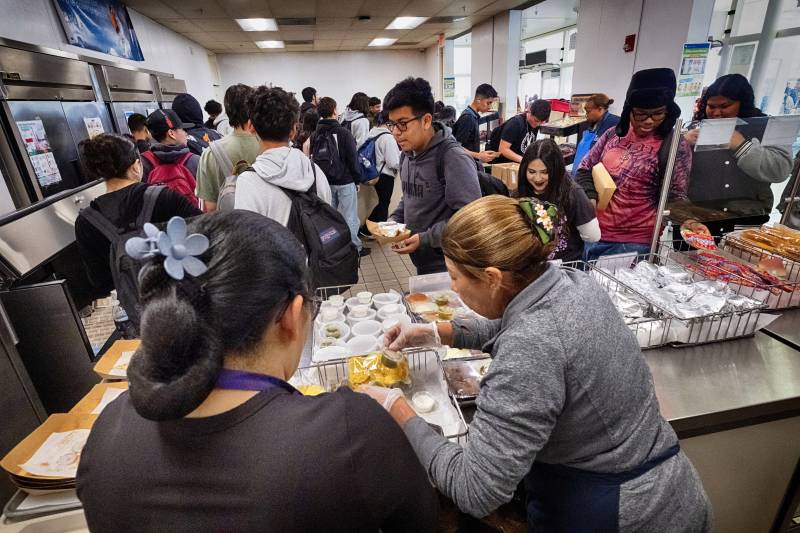But some districts are limited in what they can do. In the Lynwood Unified School District in Los Angeles County, the starting salary for food service workers is $17.70 per hour and maxes out at $21.51 per hour, according to Gretchen Janson, the district’s assistant superintendent of business services. She said these workers only work three hours per day, meaning they aren’t eligible for health benefits.
Janson says the district is waiting to see how employees react, adding: “We just don’t have the increase in revenue to be able to provide additional funding for staff.”
Nuria Alvarenga has worked food service in the Lynwood School District for 20 years. She makes $21 per hour now, but said she could likely earn more in fast food.
While she said several co-workers were considering finding other jobs, she hasn’t decided yet what she will do. She normally works at an elementary school, but has been filling in recently at a high school where she enjoys seeing former students recognize her as they stand in line for lunch.
“I’m so glad they still remember me,” she said.
School food service workers have gotten more support in recent years under a state push to expand school meals and make them more nutritious. That included $720 million in recent years for upgrades to school kitchens to better prepare fresh meals, plus $45 million to create an apprenticeship program to professionalize the industry.
It would be difficult for lawmakers to mandate a raise for school food workers given the complexities of the state’s school funding formula. That’s why some advocacy groups, including the Chef Ann Foundation, proposed a state-funded incentive program that would have given school food workers who completed an apprenticeship program a $25,000 bonus payable over five years.
That idea didn’t make it into Democratic Gov. Gavin Newsom’s budget proposal released in January. The state is facing a multibillion-dollar budget deficit, limiting new spending.
But pay raises aren’t the only incentives school districts can offer. There’s also health insurance, paid vacation, no night or weekend shifts and a pension that could guarantee a monthly income after retirement. Plus, school food workers have predictable hours, letting them work other jobs if they wish — or in summer when school is out.
“Restaurants are laying off employees. They’re cutting hours,” said Eric Span, director of nutrition services for the Sweetwater Union High School District in San Diego County. “I think we should position ourselves to really talk about some stability.”
Michael Reich, a labor economics professor at UC Berkeley, said those factors could favor school districts when competing for workers.
“Working in a school cafeteria gives you more stability, job security and maybe less stress than in a profit-making institution,” he said. “So there’s a lot of advantages from a community standpoint. But that’s not to say they don’t also want to get more money.”
